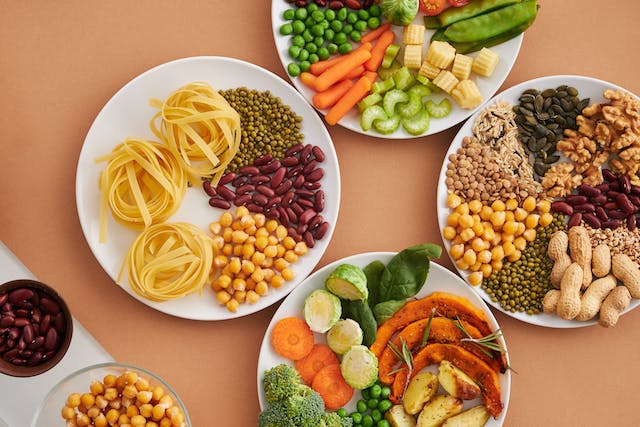Feeding Your Child at 1-2 Years: A Comprehensive Guide
Feeding your child at the age of 1-2 years requires careful attention to their nutritional needs and eating habits. Your little one is growing rapidly, developing preferences, and learning vital eating skills that will set the foundation for lifelong habits. Solid foods, including healthy snacks, become your child’s primary source of energy and nutrition, complementing breastfeeding if it’s still part of their diet.
As a parent navigating this exciting yet sometimes challenging phase, you may have many questions: What foods should I offer my 1-year-old? How much should my 2-year-old be eating? How do I handle picky eating in my 1.5-year-old? Here’s a comprehensive guide to ensure your child receives the right nutrition while fostering healthy eating behaviors.
Read

Understanding Your 1-2 Year Old’s Nutritional Needs
Between ages 1-2, your baby transforms into a toddler with remarkable physical and cognitive developments:
- Weight gain slows to approximately 3-5 pounds per year
- Height increases by about 4-5 inches during this year
- Brain development continues rapidly, requiring essential nutrients
- Motor skills advance, enabling self-feeding and exploration
- Taste preferences begin forming, influencing future eating habits
These developmental milestones require specific nutrients to support healthy growth.
What to Feed Your Child
It’s essential to continue breastfeeding as much as your child wants, ideally until at least 2 years old, as breastmilk provides vital nutrition and protection against diseases.
Your child can now eat a variety of foods, so it’s important to offer them a balanced diet. Include foods from all food groups to ensure they get the necessary nutrients. Here are some key points:
-
Animal Foods: Include milk, dairy, eggs, meat, fish, or poultry in their daily diet for protein and other essential nutrients.
-
Legumes or Nuts: Provide legumes like chickpeas, lentils, or peas, or nuts for added protein and fiber.
-
Fruits and Vegetables: Offer a variety of fruits and vegetables, especially orange and green ones, for vitamins and minerals.
-
Healthy Fats: Add a little oil or fat to their food for energy and to support brain development.
 |
 |
|---|
How Much and How Often to Feed
Offer three quarters to one cup of food three to four times a day, along with one to two snacks between meals.
If not breastfeeding, your child will need to eat more often, so aim for four to five meals a day, plus two healthy snacks.
Recognizing Hunger and Fullness Cues
Your toddler communicates hunger and satiety through behaviors:
Hunger signs:
- Pointing to food
- Saying words for favorite foods
- Bringing you containers of food
- Increased interest when seeing others eat
Fullness signs:
- Closing mouth when food approaches
- Turning head away
- Playing with food without eating
- Throwing food (sometimes)
- Saying “all done” or using signs to indicate fullness
Respecting these cues helps your child maintain natural appetite regulation, potentially preventing future eating issues.
Foods to Avoid
Minimize these low-nutrient foods that can displace healthier options:
- Junk Food: Avoid foods like crisps, cookies, cakes, soda, and candy, as they are high in sugar, salt, fat, and chemicals.
- Soft Drinks: Limit or avoid soft drinks, as they provide no nutritional value and can lead to health issues.
- Processed Snacks: Chips, cheese puffs, cookies
- Sugary Foods: Candy, cake, ice cream, flavored yogurts with added sugars
- Processed Meats: Hot dogs, bologna, highly processed chicken nuggets
- Fast Food: Generally high in sodium, unhealthy fats, and calories
- Sugar-sweetened Beverages: Soda, fruit drinks, sports drinks
- Excessive Fruit Juice: Even 100% juice should be limited to 4 ounces or less daily
- Salt: A toddler’s daily sodium needs are much lower than adults. Avoid adding salt to their portions and limit processed foods.
- Sugar: Added sugars provide calories without nutrients and can develop preferences for overly sweet foods. Check labels for hidden sugars in seemingly healthy options.
Encouraging Healthy Eating Behaviors
-
Encourage independent feeding by providing your child with their own bowl of food and ample time to eat.
-
Show love and support during meal times by sitting in front of your child, making eye contact, and interacting positively.
-
Make mealtime a joyful and interactive experience to foster a positive relationship with food.
Addressing Eating Challenges
-
Ensure your child is hungry at mealtimes and has not consumed a snack just before.
-
Offer healthy food options and avoid pressuring or forcing your child to eat, while refraining from substituting with junk food.
-
Remain calm and accepting, and provide positive attention when your child eats, while not making it a problem when they don’t.
Common Feeding Challenges and Solutions for 1-2 Year Olds
Growth Spurts and Appetite Changes
Toddlers may suddenly eat more or less based on growth needs:
- Trust your child’s appetite regulation unless weight gain concerns exist
- Maintain regular meal schedule despite appetite fluctuations
- Offer nutritionally dense foods during high-appetite periods
- Consult your pediatrician if appetite changes are extreme or prolonged
** Transitioning From Bottles to Cups**
Complete transition from bottles should occur by 18 months:
- Begin with trainer cups around 12 months
- Gradually replace bottle feedings with cup offerings
- Start with one feeding replacement, typically midday
- Consider straw cups if traditional sippy cups are refused
- Maintain consistent routines around drinking times
Balancing Milk and Solid Foods
Finding the right balance ensures optimal nutrition:
- Offer solids first, then milk/breastfeeding to encourage solid food acceptance
- Limit milk to 16-24 ounces daily to prevent displacing solid foods
- Consider serving milk with meals rather than between to avoid reducing appetite
- If breastfeeding, offer solids before nursing sessions during the day

Conclusion
Feeding your child at this age is about providing a balanced and nutritious diet while encouraging healthy eating habits. By offering balanced meals, respecting your child’s hunger cues, creating positive mealtime experiences, and addressing challenges with patience, you can help your child develop a positive relationship with food that will benefit them throughout their life.
Remember that each child is unique in their eating journey. While the guidelines provided here offer a comprehensive framework, trust your parental instincts and consult with healthcare providers for personalized guidance. With consistency, patience, and nutritious offerings, your 1-2 year old will develop the eating skills and habits needed for healthy growth and development.





